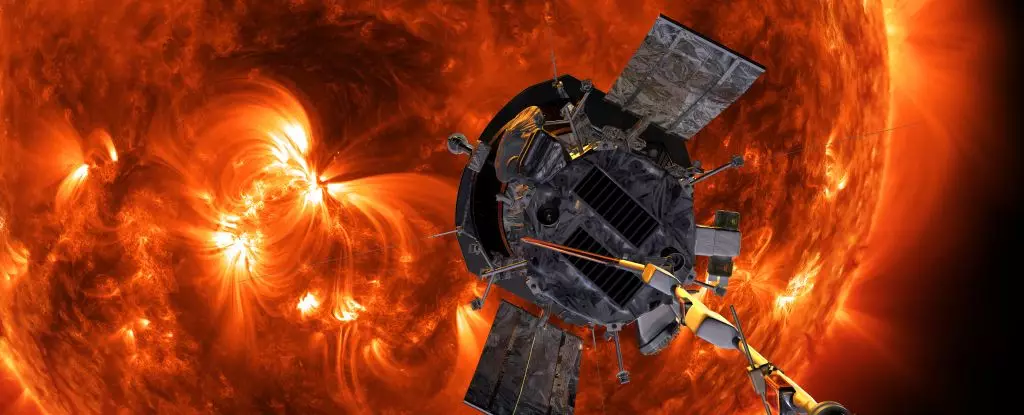NASA’s Parker Solar Probe is making headlines yet again as it embarks on a groundbreaking mission to probe the Sun like never before. On Christmas Eve of this year, the probe is set to come within a mere 6.1 million kilometers (3.8 million miles) of our star, marking the closest approach ever achieved by a human-made object. As it travels at a staggering speed of approximately 192 kilometers per second, the Parker Solar Probe’s odyssey epitomizes human ingenuity and ambition in space exploration. This article delves into the significance of this mission, the mysteries surrounding the Sun, and the future objectives of the probe.
Launched in 2018, Parker Solar Probe was meticulously engineered to withstand extreme temperatures and radiation levels as it approaches the solar corona—the outermost layer of the Sun’s atmosphere. The spacecraft’s innovative carbon-composite heat shield allows it to endure temperatures exceeding 1,377 degrees Celsius (2,500 degrees Fahrenheit), ensuring that its scientific instruments remain functional during its perilous journeys. As it embarks on its 22nd close flyby, also known as a perihelion, Parker is continuing its legacy of setting solar proximity and speed records, with many more close encounters expected in 2025.
The configuration of Parker Solar Probe is a triumph of modern engineering, embodying the spirit of exploration that defines NASA’s mission. This spacecraft is not merely a vessel; it is a scientific instrument designed to capture the essence of solar dynamics, with the goal of unlocking secrets that have long eluded astrophysicists.
The Sun, a massive sphere of plasma, has long fascinated scientists with its complexities. Despite being the center of our solar system, many unanswered questions remain. One of the most puzzling phenomena is the temperature discrepancy between the solar corona and the Sun’s surface, known as the photosphere. While the photosphere averages roughly 5,500 degrees Celsius (9,932 degrees Fahrenheit), the corona reaches temperatures exceeding one million degrees Celsius. Parker’s close-up observations aim to shed light on this mystery, potentially altering our understanding of solar physics.
Further challenges include deciphering the generation of the Sun’s magnetic field, which originates deep within its interior, along with understanding the sequence of solar activity cycles. Scientists are hopeful that the data collected during Parker’s perilous flybys will illuminate these and other key aspects of our star’s behavior.
Astrophysicist Nour Raouafi, Parker’s project scientist, aptly conveyed the gravity of this mission, likening the Parker Solar Probe’s endeavors to the historic Moon landing of 1969. Each close perihelion represents a monumental achievement, not only for NASA but for humankind as a whole. The December 24 flyby marks the first of Parker’s final set of close encounters, each offering a wealth of scientific data critical for comprehending solar phenomena, and ultimately benefiting life on Earth.
Following the December perihelion, Parker is scheduled to send back a crucial beacon tone on December 27, confirming its safe passage near the Sun. This notification will be a testament to the success of human engineering and the resilience of our scientific aspirations as we push the boundaries of exploration and understanding.
Looking ahead, Parker Solar Probe is set to undertake four additional perihelions in 2025, during which it will continue collecting vital data. These missions will further explore the intricacies of solar dynamics, ensuring that the scientific community remains at the forefront of solar research. As the final flybys approach, there is an awareness of the probe’s impending limitations. Once it exhausts its fuel reserves, Parker cannot make the necessary trajectory adjustments to shield itself effectively from the Sun’s relentless pressure. As a result, the probe may meet a fiery end, a fitting conclusion to its audacious journey.
Astrophysicist Justin Kasper poignantly remarked on the fate that awaits Parker, envisioning a future in which the spacecraft becomes a molten remnant of its former self, circling the Sun for eons. This imagery serves as a powerful reminder of the duality of exploration—the drive to push boundaries cannot exist without accepting the risks involved.
NASA’s Parker Solar Probe is set to make its mark on history through its daring exploits and monumental contributions to our understanding of the Sun. As the spacecraft embarks on its Christmas Eve flyby and prepares for subsequent missions, it not only represents a scientific endeavor but also embodies humanity’s innate desire to explore, learn, and grow. The knowledge gained from Parker’s daring approach could pave the way for unprecedented advancements in solar science and enhance our comprehension of the universe at large. As we await the probe’s findings, the world holds its breath in anticipation—ready to embrace the solar revelations that lie ahead.


Leave a Reply